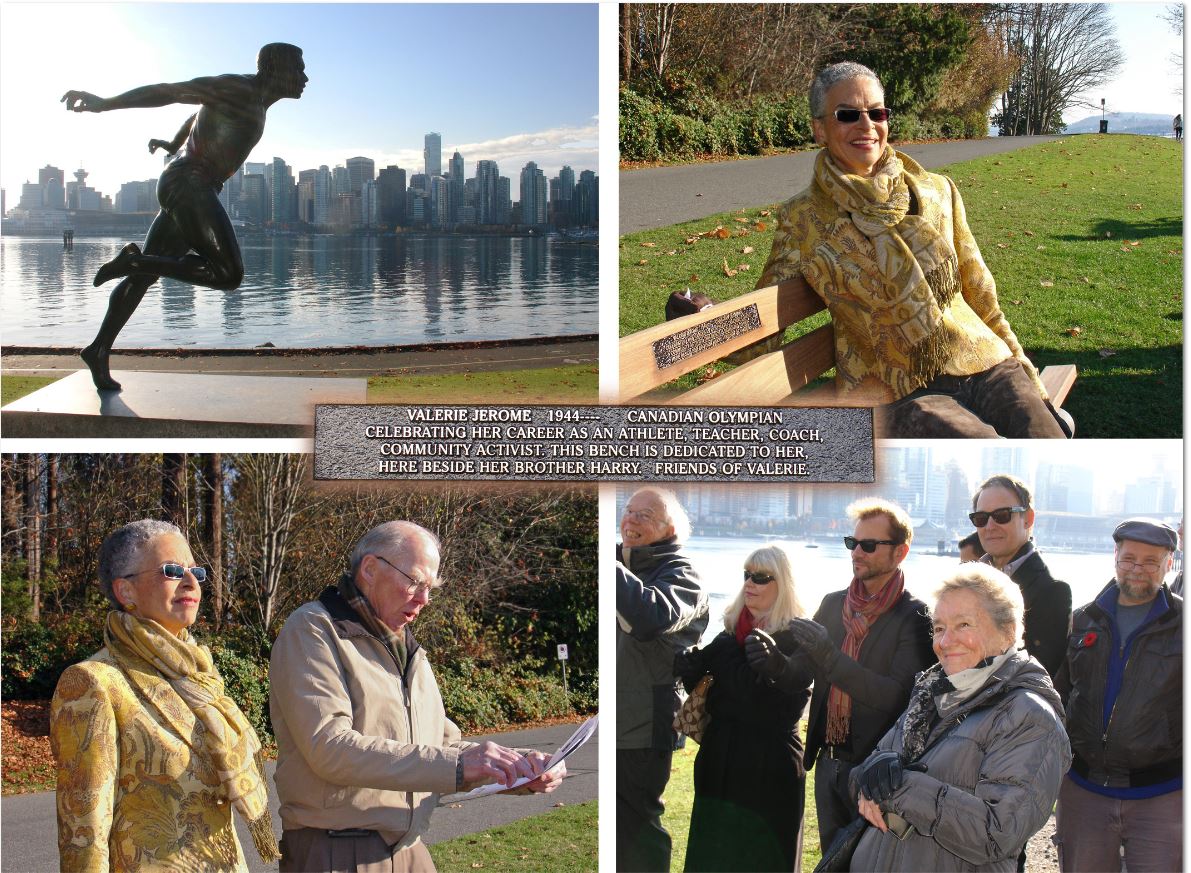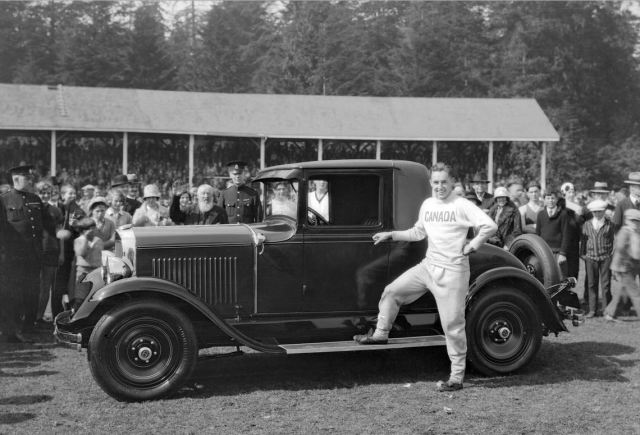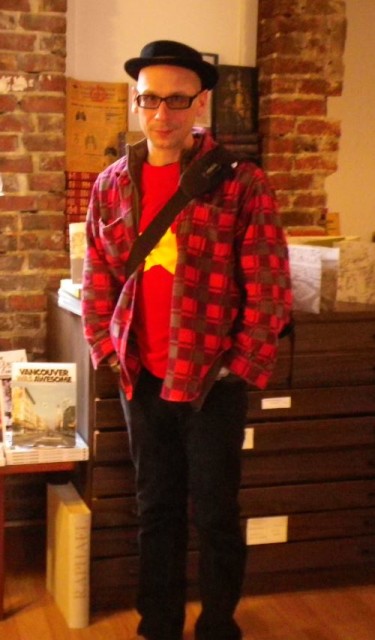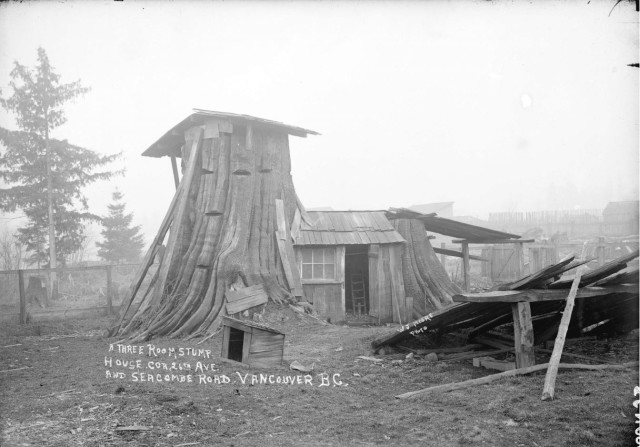On June 19, 1973, a three-alarm fire broke out at the old King Edward High School at West 12th and Oak Street. The building was destroyed, but remnants remain on the old site, now part of Vancouver General Hospital.
From Vancouver Exposed: Searching for the City’s Hidden History
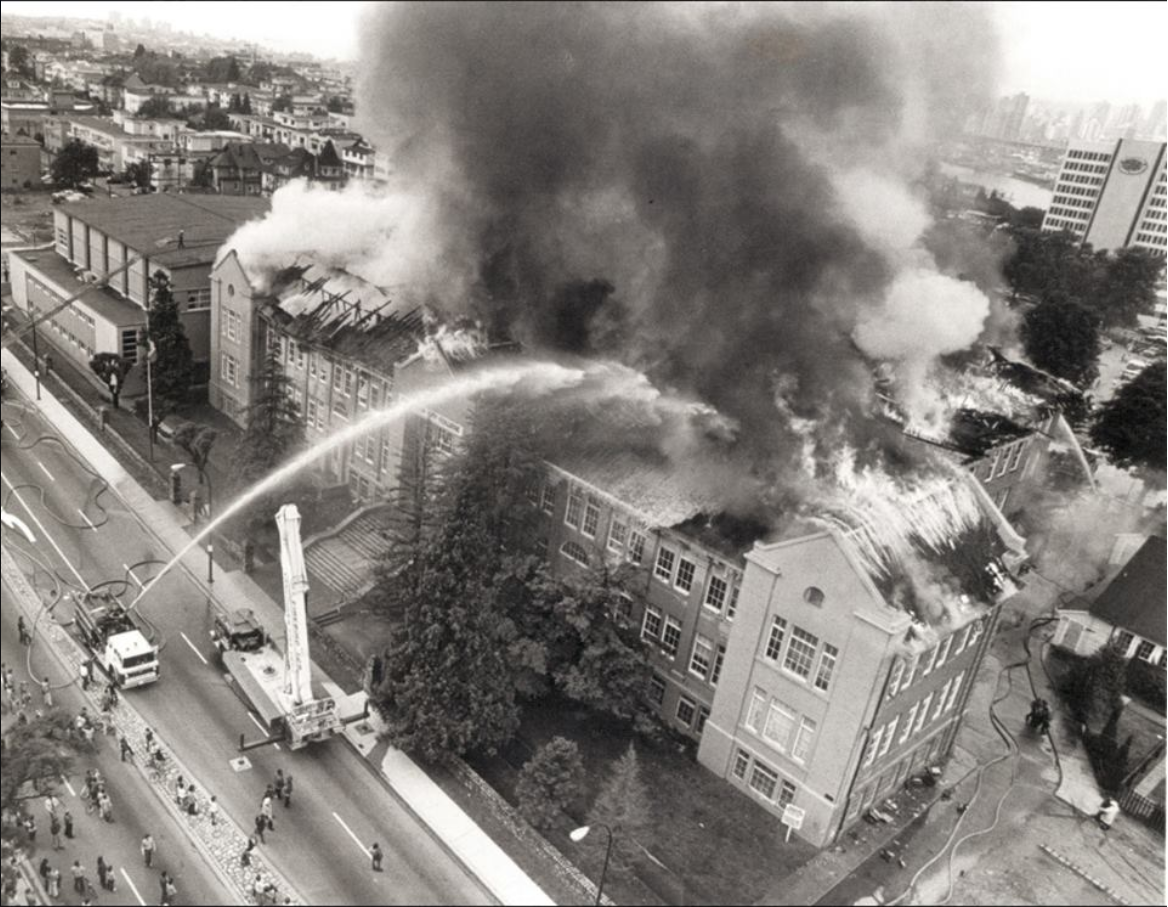
Designed by William T. Whiteway:
William T. Whiteway, the same architect who designed the Sun Tower, designed the school in the neoclassical style and topped it off with a central cupola. It was the first secondary school built south of False Creek, opened in 1905 and was officially renamed King Edward five years later.
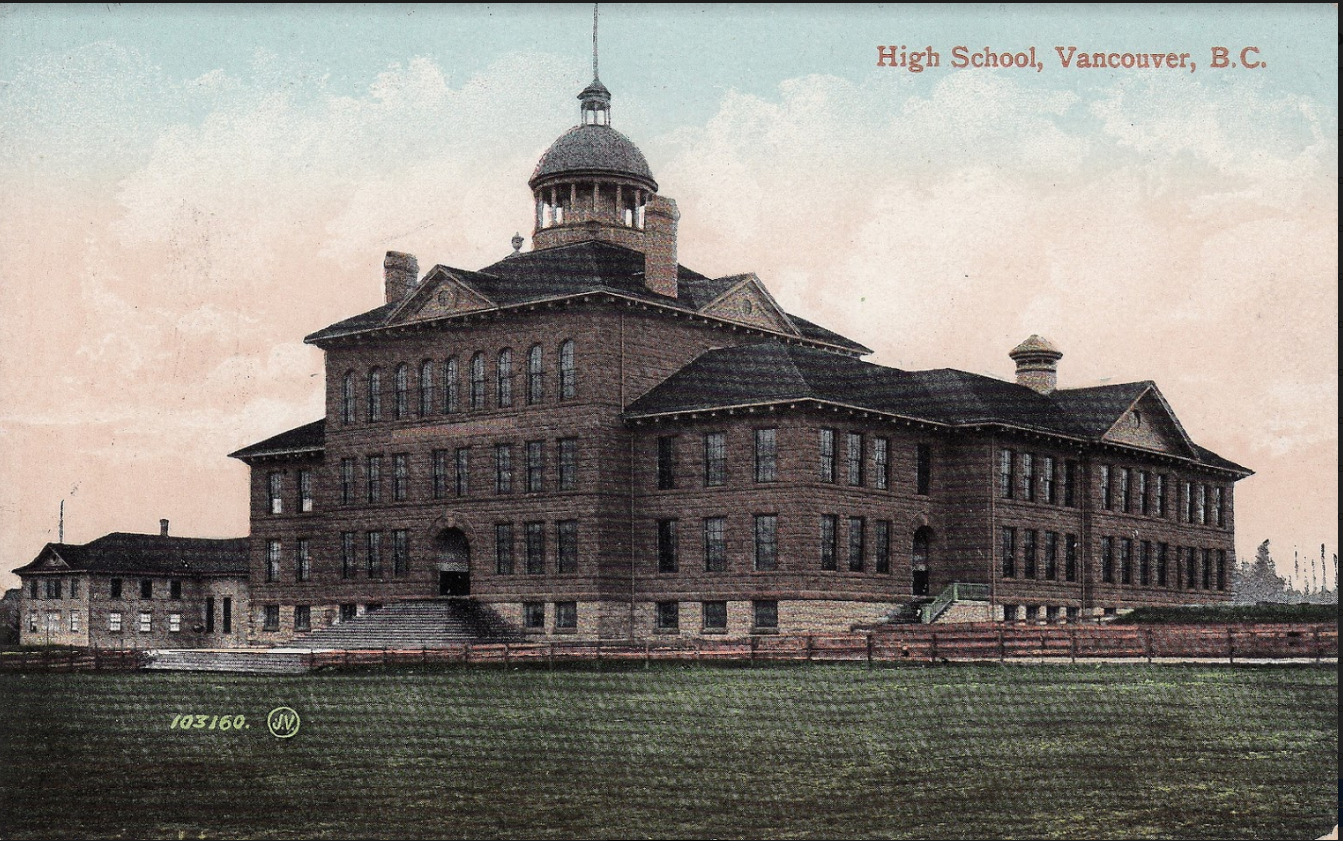
Impressive Alumni:
The list of King Ed alumni includes an impressive array of Vancouver luminaries. There is philanthropist Cecil Green and broadcasters Jack Cullen and Red Robinson. Other notables to pass through the school’s corridors are Dal Grauer, president and chair of BC Power Corporation and BC Electric; Nathan Nemetz, Chief Justice of the Supreme Court of BC; Grace McCarthy, politican; Yvonne De Carlo, actor; Jack Wasserman, newspaper reporter; Jamie Reid, poet; educator Dr Annie B. Jamieson and Olympic athlete Percy Williams.
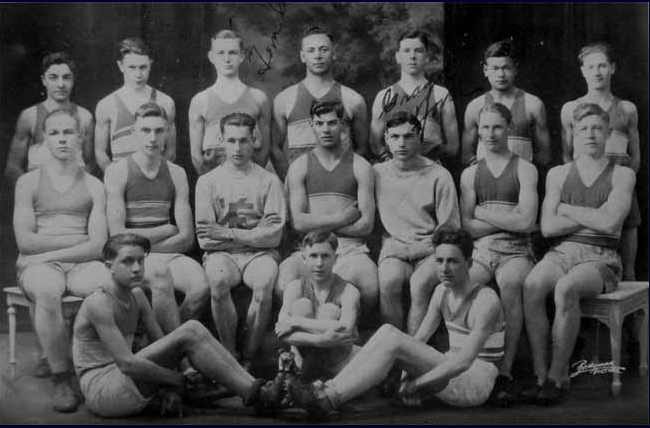
In 1962 King Ed became an adult education centre and the kids transitioned to Eric Hamber, says Andrea Nicholson, alumni coordinator. Vancouver City College took over the King Ed building in 1965. David Byrnes attended first-year university there in the late 1960s. “One day when we were goofing around my friend Malcolm told me he’d found a way into the attic,” says David. “I remember climbing up to look out the cupola and finding a rifle range.”
Taught Shooting:
Andrea confirms there was a rifle range and students from Cecil Rhodes and Henry Hudson elementary schools used to train there. Andrea’s mum Elizabeth (MacLaine) Lowe taught at the school and later became department head for business education. She was supposed to teach night school on the day the school burned down. “I remember as a child going up into the turret, and I remember when they pulled that school apart the dividers for the bathroom stalls were solid marble,” says Andrea, who could see the flames from the grounds of Cecil Rhodes Elementary at 14th and Spruce.
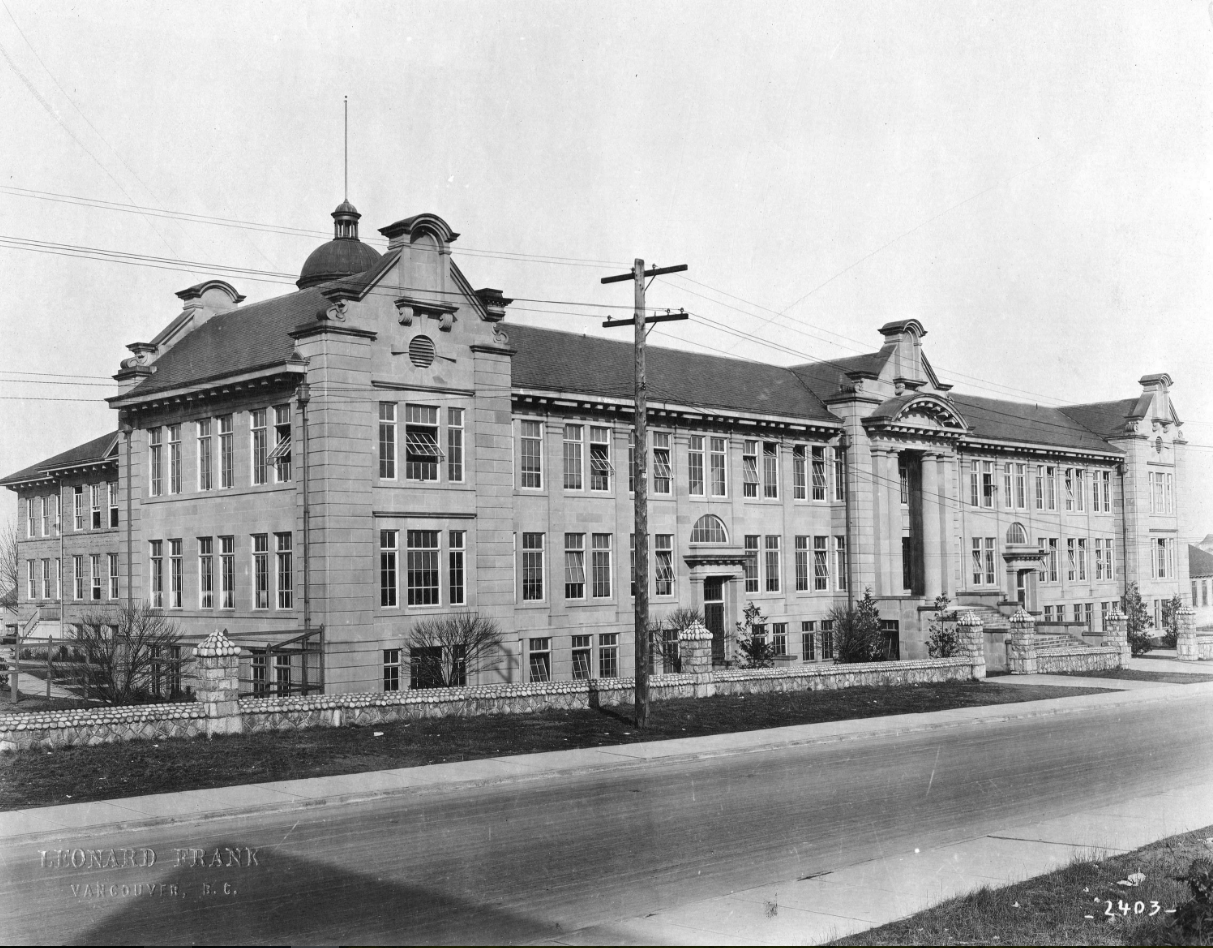
Building Sold:
Vancouver General Hospital bought the King Edward building and land in 1970, though it remained an educational institution until the fire. Now, all that’s left is the stone wall at Oak and West 12th Avenue, a stained-glass window installed in Vancouver Community College’s Broadway campus, and, in the Gordon and Leslie Diamond Health Care Centre that replaced the school, there is a plaque, a large photograph of the original school and a circle of yellow tile in the lobby outlining the original King Ed High School.

The wall received a Places that Matter plaque in 2012. Former King Ed teacher, and vice-president Annie B. Jamieson (1907-1927) had an elementary school named after her.
Related:
© All rights reserved. Unless otherwise indicated, all blog content copyright Eve Lazarus.





